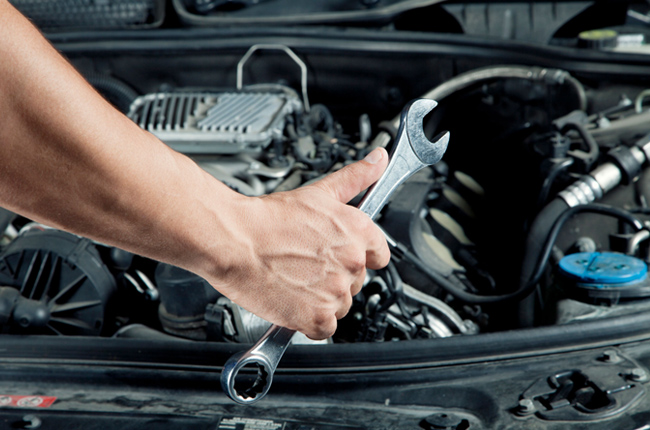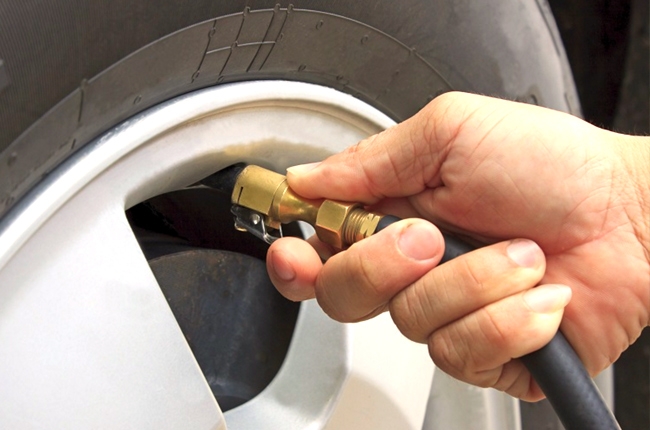
Long weekends often translate to long drives. It is the time when we get out of our comfort place (aka home and workplace) and go somewhere far because, you know, we don't get much time to relax. Be it northern or southern part of the Philippines, the destination will always be exciting, so should the trip itself.
However, it's best for you to run a few essential preparations before you head out on the road and sit behind the wheels for hours. Your car should be in good shape, just as how you would prepare yourself before a big day. Hey, it's always better to be prepared. So, here's a checklist of the do's and don'ts in preparing your car before you go on a long drive.
Do check your car's fluid.

Among the problems you'll encounter on the road result from missing to check your car's fluid – be it the motor oil, coolant, brake fluid, or windshield washer fluid. To avoid inconveniences such as overheating and malfunctioning air condition unit, check everything that uses fluid in your car.
To familiarize yourself before touching anything under the hood of your car, here are the six must-know fluids. After understanding these types of vehicle fluid, you need to check if your car has substantial amount, or if you need to top up.
For example, if you want to check your engine oil, there's a dipstick located near your car's engine. Pull out the dipstick, which usually comes with a yellow or red handle, then wipe it with a clean cloth. Insert the stick back in, and pull out to see if it's in the right amount. For the radiator, on the other hand, let the engine cool off first before twisting the radiator cap open, or else you'll burn your precious hands.
Do test your car's electronics, especially the lights.

Your car doesn't just rely on gasoline or diesel to operate. Under the covers of your door panels, dashboard, and hood are wirings to let electricity flow to your headlights, side mirrors, and even your car stereo. You don't want to run into some problems during your trip, especially losing a lamp in the middle of your night drive.
To test if your car's electrical components are working properly, turn your engine on and toggle the switches. Among the things you need to check are the lights, such as the head- and taillights, turn signal and hazard lights, high beams, and interior lamps. Also, you must familiarize yourself with the different dashboard warning lights, as they are one way of telling if there's something to be checked in your car. If in case things aren't working properly, take your car to the service center to have the wirings checked or have the bulbs checked.
Do check your brake pads, belts, and hoses.

Are your brakes letting out a high-pitched scream every time you're stepping on the brake pedal? Maybe your brake pads are becoming too thin. If that's the case, it's recommended to have it checked. If the pads are thinner than 6.4 mm, you need to replace them and wait no longer before your brake discs get damaged. A brand-new brake pad is usually 13 mm thick.
Two other things to consider checking are the belts and hoses. Your car isn't just metals and plastic. Aside from your tires, rubber materials like the belts you'll find on your engine and the hoses that connects different components under the hood are included in the crucial components of your car. A friend once lost his alternator belt without him knowing it and ended up draining the car's batteries. He ended up getting towed down all the way from Tagaytay as his car won't start.
Do check your tires.

Your drive won't be as smooth as a sail without proper-inflated and good-condition tires. Before you inflate your tire, check the vehicle owner's manual first to know the optimal air pressure, which is measured in PSI. Note that the numbers found on the walls of your tire is not the right air pressure, rather, it's the maximum pressure your tire can handle. Another thing is to check the tread depth, a crucial must-do before every long or short drives. One way to check this is through what people call the coin test.
To check, use a P1 coin and insert it into the tires groove with the bottom year first. If you can barely see the year upon inserting the coin, you still have okay tires. However, if the year is clearly showing, it might be best to get a new set.
Tires are responsible for gripping on asphalt and they also contribute to your car's fuel economy. How? According to the U.S. Department of Energy, a drop of 1 PSI would pull gas mileage by almost 0.4%. That's because the tire, as it supports the entire weight of the vehicle, has more surface area touching the road. The result would be more work for the engine in keeping your vehicle moving.
Don't throw too many 'travel necessities' in your cabin.

Neck pillows, blankets, overflowing bags of snacks, and other unnecessary stuff – you don't need tons of these. Throw in just a couple to make room for other stuff that you might need on your way home or your next destination. A messy cabin may lead to distractions that you don't want to encounter on the road. It may even be a cause of more injuries, as unsecured items could be thrown around the cabin in case of an accident.
In addition, packing in loads of unnecessary stuff in your car would add more weight, which isn't what you need if you're tight on fuel budget. The heavier your load is, the harder your engine works to get your car going; the harder your engine works, the more fuel it needs to burn. Try keeping things ample for a breathable cabin space that you and your passenger would enjoy.
Don't inflate your tires over the recommended PSI.

While we just discussed keeping your tire from being under-inflated, we also recommend not over-inflating it. Putting too much air in your tire would cause you poor stability as it has negative impact on your handling. Of note, cornering and stopping wouldn’t be as accurate as when you have the proper PSI.
Although it’s known that under-inflated tires worsen fuel economy, it doesn’t mean that over-inflated tires will make it better. When a tire is too firm, there is less surface area; less surface area translates to less traction on the road.
Don’t forget your tools and a spare tire because you never know...

If there’s one thing you shouldn’t take away from your vehicle, it’s probably your tool set. The usual tools, along with a set of jumper cables, early warning device, tire pressure gauge, and a spare tire are your first aid kit on the road. There is no reason for any driver not to have these in their trunk, as not having these is like playing soccer on a wet football field with a flat shoes - even worse, with flip-flops.
Also, never, ever in your entire life, leave without checking if your spare tire is properly inflated because what’s the point of having an extra if it’s going to waste your time, too? This is where you’ll be needing a tire pressure gauge, all five wheels should be well checked before leaving the garage, especially before long drives.
If you read (and followed) everything carefully, you should be good to go. Oh, and one more thing: Don’t forget to have fun and keep safe!
Latest Features
-
Which Chery should I buy? / Featured Article
Chery’s revamped lineup features six vehicles, each with its unique strengths. Not sure which one’s right for you? We’re here to help you decide.
-
The difference between wax and polish / Tips & Advice
Confused about whether your car needs a wax or polish? This article will guide you on what they are and what to choose for your car.
-
The 6 things every Ford Ranger must pass before it leaves the factory / Featured Article
Every Ford Ranger, from the base model to the Ranger Raptor, goes through a full inspection process before it leaves the factory. This includes six steps that make sure it’s ready to drive a...
Popular Articles
-
Cheapest cars under P700,000 in the Philippines
Jerome Tresvalles · Sep 02, 2024
-
First car or next car, the Ford EcoSport is a tough package to beat
Jun 18, 2021
-
Car Maintenance checklist and guide – here’s everything you need to know
Earl Lee · Jan 12, 2021
-
Most fuel efficient family cars in the Philippines
Bryan Aaron Rivera · Nov 27, 2020
-
2021 Geely Okavango — Everything you need to know
Joey Deriquito · Nov 19, 2020
-
Family cars in the Philippines with the biggest trunks
Sep 20, 2023
-
Head to head: Toyota Rush vs. Suzuki XL7
Joey Deriquito · Oct 28, 2020
-
Why oil changes are important for your car
Earl Lee · Nov 10, 2020
-
2021 Kia Stonic — What you need to know about it
Joey Deriquito · Oct 16, 2020
-
Top 7 tips for buying a used car in the Philippines
Joey Deriquito · Nov 26, 2020



